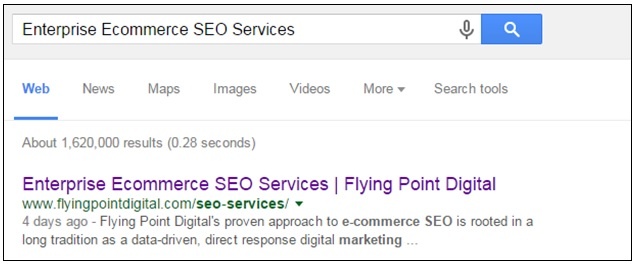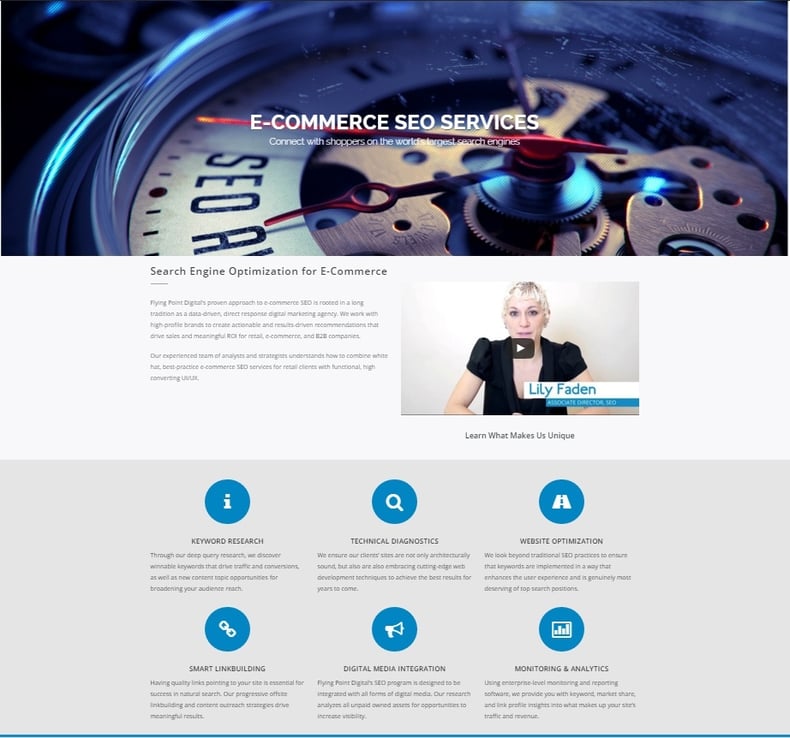As Google’s algorithm becomes more and more intelligent, so should your on-page optimization strategy. Two SEO trends, user engagement and semantic on-page keyword optimizations, will reshape the way we think about SEO optimization in 2016. This post will walk you through how you can utilize these two types of on-page optimization strategies right now.
With the first release of Hummingbird in late 2013, Google radically changed the search landscape with updates aimed at improving conversational search, as well as Google’s understanding of semantically related concepts. One of the major motivations for this was to improve the way people interact with Google on their mobile devices using speech-to-text tools like Google Now. Additionally, this update was intended to make Google search results more relevant to users, opposed to strictly matching exact word combinations. This means that Google is now using the content of the page, in addition to the meta information presented, to answer more and more complex searches that touch on a greater number of words.
Google has also been rolling out updates that place a much higher emphasis on user engagement metrics, the most recent of which was the Quality Update released earlier this year. Content quality, time spent on page, return visitors, bounce rate, and even things like social sharing—all these factors can play a role in your rankings.
With all of the changes to how Google ranks pages, semantic on-page optimization and user engagement optimization will play a bigger part in your strategy than ever before.
Doing Better SEO: Semantic On-Page Optimization
Traditional on-page SEO optimization was fairly straightforward. You find a good keyword that truly makes sense as a target for a given page, make sure you have it in the URL, title tag, meta description, body content and maybe H1, and you would be in fairly good shape. URL, title tag, and body content are the places where search engines look to understand what a given page is about. With the exception of worrying too much about H1, this strategy still works fairly well. However by optimizing your page for a larger set of semantically related keywords, you can achieve rankings across a greater number of targets with the same page. This is part of an overall trend of Google preferring fewer landing pages.
Let’s take a look at an example. In this case we will look at the page content of our own SEO Services page at Flying Point Digital.
Key On-Page SEO Elements:
Old Way:
URL: /seo-services/
Meta Title: SEO Services
H1: SEO Services
New Way:
URL: /seo-services/
Meta Title: Enterprise Ecommerce SEO Services
H1: E-Commerce SEO Services
In the “Old Way” example, everything that is thought to assist in on-page targeting, targets the same keyword. In the “new way” example, instead of only focusing on the highest volume keyword (SEO Services), we focused on two additional longer tail keywords, sprinkled throughout our on-page elements. This makes up three keywords if you count the H3 which we also rank for. By using a number of target keywords in our on-page SEO elements, we are effectively targeting three things, where before we were only targeting one.
While Google’s updates have undoubtedly been aimed at understanding what keywords relate to “SEO Services”, using alternate keywords helps Google to better understand what your page is about. Google’s increased understanding of your pages content doesn’t stop there. Once you have clearly demonstrated through the use of closely related keywords what your page is about, Google will start using that knowledge to rank you for synonyms to your target keywords.
This makes the content of your page, and how it is presented, more important than ever. When it comes to optimizing your page, you not only want to optimize for search engines, you want to optimize for users too. In that spirit, it turns out one thing both search engines and users love are bulleted lists or blurbs. These help users and search engines understand what a page is about, but also help users too.
Currently, our site ranks number two when searched from NYC for “Ecommerce SEO Technical Diagnostics”, yet the combination of those words does not appear anywhere on the page. This is a perfect example of this on-page optimization strategy at work. The words “Technical Diagnostics” appear in our bulleted content block, while the words E-Commerce SEO are all over the page in one format or another.
You can implement a similar strategy on your site by choosing your main target keyword for your title tag. In our case we picked “Enterprise Ecommerce SEO Services”. Then, use two or even three other keywords throughout your pages content and SEO elements. You might even consider trying not to repeat the same keyword more than once in any SEO element (page title, URL, body content).
In this case, low volume or not, by staying true to what and who we are, Google has rewarded us with a number one ranking spot locally:

Improving On-Page User Engagement Metrics
Pretend you are a search engine, but it’s like a regular job in a regular office where you sit behind a desk, and people come in and ask you questions. You then tell them which office down the hall they need to visit to get the answer to their question. You get a person who asks “how to change a spare tire”. You send them down the hall to Ted’s office to get their answer. (Ted is the tire expert in this imaginary world.) They return immediately and ask the same question. Apparently your first choice (Ted) didn’t have the right answer, or at least not the one this person was looking for. Knowing the fate of your last unsatisfied customer, how often would you send people asking that same question back to old Ted? Probably not often right? Believe it or not it’s highly likely that search engines actually DO behave in a similar fashion. Whether or not a site shares all of its data with Google through Google Analytics, Google can always see how quickly a user comes back to Google asking for the same thing or something similar. Google’s main objective is to help you find the best answer for anything you ask it. That being said, if users keep bouncing off pages that for one reason or another Google has ranked favorably, Google might start to rethink that ranking.
Conversely, what if you have a page that is not yet ranking very well for high volume terms, but is is still getting a trickle of traffic from long tail terms? If people are LOVING your content, Google can see that too. When you create content that people love, they share it, and maybe even link to it. When your user engagement metrics increase, Google could start ranking that page higher for the terms it already ranks for, and even start ranking it for new higher volume head terms.
Tools to Improve On-Page User Engagement
Your first weapon in creating content users love is to understand what your readers want to read about and to deliver the BEST piece of content for that one thing. Truly focus on the user, not search engines, and provide something of real value to people.
That alone can carry you pretty far, but understanding how users interact with your page can take you even further. One tool we have been fond of using as of late is hotjar.com, which allows you to create heatmaps and watch user sessions in a video playback. This can be hugely useful for conversion optimization. But in this case, the goal is increasing time on-page and further engagement with the site.
If you’re looking for an all-in-one solution for creating your landing pages and optimizing them, Unbounce is a tool we also use for some of our clients. With a super easy-to-use drag-and-drop interface, this tool allows you to create great looking landing pages, and then test, and optimize them.
Key Takeaways
When it comes to use of keywords in your on-page optimization strategy, don’t focus solely on one keyword. Instead, research and focus on a small set of two to three keywords you’d like to rank for and alternate their use throughout the page. In terms of user engagement, make sure your content is what you truly believe to be the BEST page on the web for a query. Make sure you make it easy for users to interact with the information on the page and get the info they want quickly. But, you also have the opportunity to provide them with more content so users can dive deeper and read more. In short, focus on making your page better for humans, not machines. Users are really who matter, but remember that search engines are trying to mimic human logic. By playing into what humans want, you can play into what search engines want, too.




COMMENTS